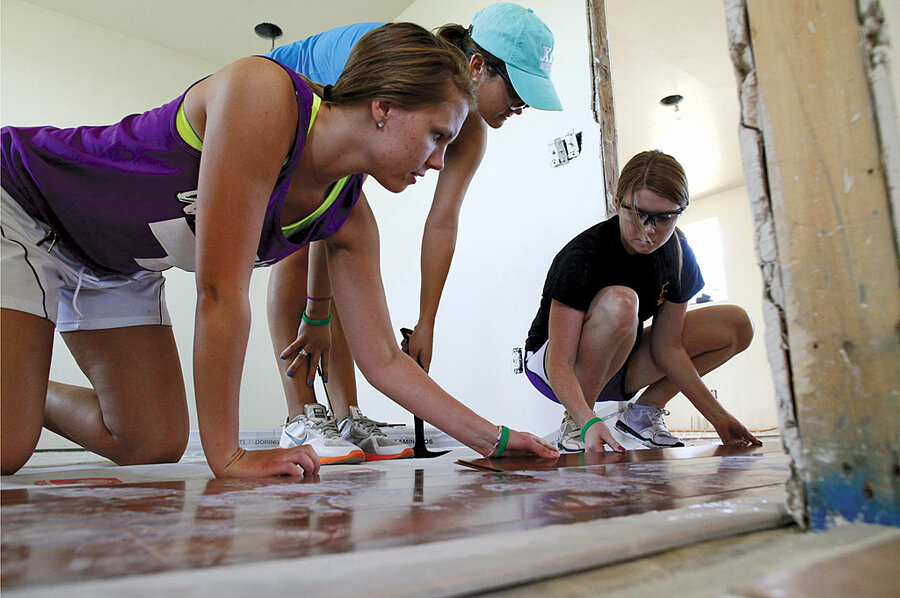Doing well by doing good
Loading...
Is altruism good, or just a good strategy? The biologist E.O. Wilson has described it as both. The purest form of altruism involves self-sacrifice for others – a family, tribe, or cause – with no expectation of reward. The other altruism, which seems less noble, is doing a favor to get a favor.
Poems and statues are dedicated to uncompromising heroes. Most people are turned off by back-scratching deal-makers. But wait. Pure altruism, Dr. Wilson pointed out in his book “On Human Nature,” advances the goals only of a narrow set of people. The hive benefits when a honeybee gives up its life to defend the group. By contrast, dealmaking altruism may look cheesy and hypocritical, but it is essential in a complex, diverse society.
Hard altruism is the stuff of legends. Soft altruism is the infrastructure of civilization.
A family, company, cause, or ideology needs hard altruism to cohere. One for all and all for one. But at some point, even the most tightly disciplined island needs to connect to the mainland. Deals must be done, favors returned.
Whatever form it takes, altruism is good for others, for us, and for society, which is why versions of the golden rule and the good Samaritan parable exist in most cultures. In communities where social capital is high, hard times are not as hard.
Periodically, social analysts worry that the wheels have come off society, that economic pressure or new technology or fads or amusements are undermining our social capital, making us more selfish and less caring. In the mid-1990s, Robert Putnam penned a much-talked-about essay titled “Bowling Alone: America’s Declining Social Capital.” Americans were spending so much time in front of TVs and computer screens, Dr. Putnam wrote, that participatory democracy, volunteering in the community, even amiable activities like bowling leagues were withering. If people were not connecting, social capital would wither as well.
And yet one key measure of social capital – rates of volunteerism – has risen steadily since then. More than a quarter of Americans now give their time to charitable causes. Back when Putnam wrote his essay, the term “Generation X” – those people who were born in the 1960s and ’70s – was usually modified by the word “slacker.” But as that generation has matured, its members have been volunteering at rates higher than the national average.
That’s the antithesis of slacking.
Twenty-first century social capital isn’t built so much through bowling leagues and welcome wagons. Among other things, Internet-enabled social networks have become a powerful force for altruism, pinpointing needs and marshaling resources. Struggling individuals and companies, for instance, have benefited from “cash mobs.” Organized online (usually via Facebook), these bring to bear scattered do-gooders in ways that door-to-door solicitation never could.
Altruism may look different today. But whether it is mowing a neighbor’s lawn, giving a renter a break, or cash-mobbing a mom and pop store, altruism flourishes because it helps others and us and civilization. Even if we cherish the island where we were born – even if we would sacrifice everything for family, nation, or honor – we also know that we are part of something larger. We are a piece of the continent, a part of the main.
John Yemma is editor of the Monitor.





